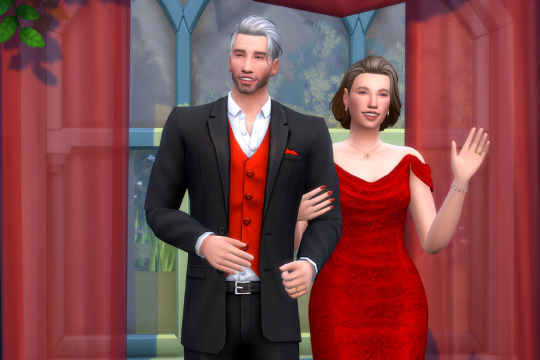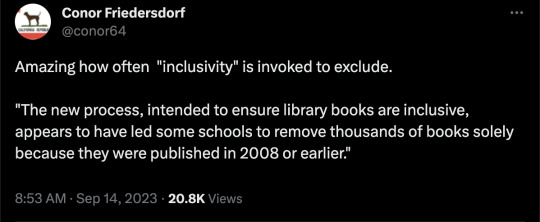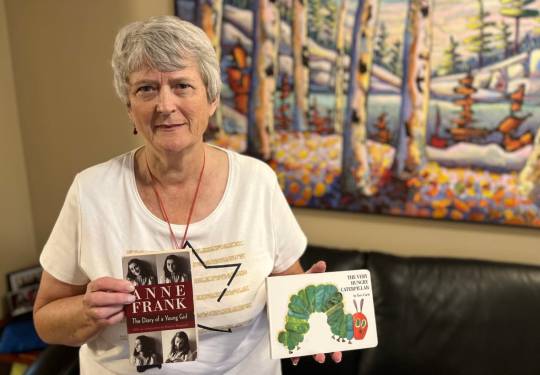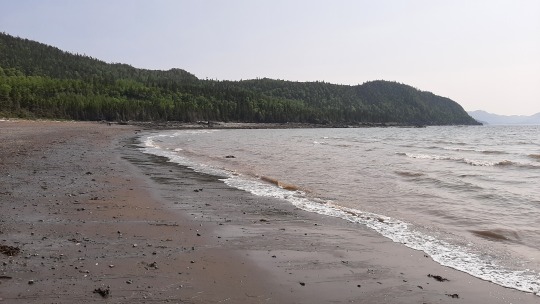#Group Retirement Plan Canada
Text
How Group RRSPs Contribute to Employee Financial Wellness & Retirement Security
In today's fast-paced work environment, ensuring employee financial wellness is crucial for both the success of businesses and the long-term security of workers. One of the most effective ways companies can contribute to their employees' financial stability and future is by offering Group RRSPs. These employer-sponsored plans provide employees with a structured, tax-efficient way to save for retirement, helping to improve both their immediate financial health and long-term security.
Enhancing Financial Wellness
A Group RRSP (Registered Retirement Savings Plan) is a retirement savings vehicle offered by employers in Canada. It works similarly to an individual RRSP but is administered on a group basis, with contributions automatically deducted from employees' paychecks. This convenience encourages consistent savings and disciplined financial habits. In addition, many employers match a portion of employee contributions, which further enhances the growth of their retirement funds.

One of the most significant ways Group RRSPs promote financial wellness is by providing employees with a sense of security. Knowing that their retirement savings are being built consistently can reduce financial anxiety and allow employees to focus more on their work. Regular contributions to a Group Retirement Plan Canada also offer tax advantages, as contributions are tax-deferred until they are withdrawn during retirement. This immediate tax benefit can improve employees' overall financial health, giving them more disposable income in the present.
Supporting Retirement Security
The primary purpose of Group RRSPs is to provide employees with a secure foundation for retirement. With many Canadians facing uncertainty about their financial futures, having a well-structured retirement plan in place is essential. By participating in an employer-sponsored Group RRSP, employees can grow their retirement savings over time, building a reliable nest egg for their post-working years.
In addition, employers who offer Group Retirement Plan Canada programs often provide access to professional financial advice, helping employees make informed decisions about their investments. This guidance can help employees maximize the growth of their retirement savings while minimizing risks, ensuring that they are better prepared for the financial challenges of retirement.
Encouraging Long-Term Financial Planning
One of the key benefits of Group RRSPs is that they encourage employees to think about their financial futures. By fostering a culture of saving, these plans instill the importance of long-term planning. This not only improves employees' financial habits but also increases their engagement and loyalty to the company. Employees who feel that their employer is invested in their financial well-being are more likely to remain with the company, reducing turnover and promoting a positive workplace culture.
Conclusion
Offering Group RRSP is a valuable investment for any company seeking to enhance employee financial wellness and retirement security. By contributing to a Group Retirement Plan Canada, employers help employees take control of their financial futures while also benefiting from a more engaged and secure workforce. These plans not only promote responsible saving habits but also provide employees with peace of mind, knowing that their retirement is well-cared for. As financial stability becomes increasingly important, Group RRSPs stand out as a powerful tool for both employees and employers to build a prosperous future.
For more detailed guidance and resources on setting up a Group Retirement Plan, visit Open Access Ltd. visit their website at https://openaccessltd.com/ or reach out to them at [email protected]. Your path to business success begins with the right partner, and Open Access is here to guide you every step of the way.
0 notes
Text
Retirement Planning Starts In Your 20's!
For most people, retirement seems like it will never happen due to the time seeming so far off. But the truth is, life goes by in the blink of an eye and before you know it, you’ll be almost 65.
It may seem daunting to think about retirement when you just graduated and are -perhaps- saddled with student loan debt. Or your job prospects aren’t as good as you thought.
However, retirement planning…

View On WordPress
#Group RRSP#money#Pension plan#retirement planning#Retirement planning at 20#retirement planning canada#RRSP
0 notes
Text
Pension Plan Advisors Can Help You Plan a Better Retirement
Life after retirement is something that many people look forward to and dream about. Expert and experienced pension plan advisors can help you create a solid plan about your life as a retiree.
#pension plan advisors#group retirement savings plan#employee benefit advisors#pension advisor canada#small business benefits advisor
0 notes
Text
By Lynn Paramore, Institute for New Economic Thinking
Common Dreams
May 15, 2024
Shameful fact: the plight of U.S. retirees is a global exception. In their pursuit of lower taxes, America’s wealthiest individuals support policies that make it extremely difficult for seniors to manage the increasing costs of healthcare, housing, and basic necessities. Not so in other rich countries like Germany, France, and Canada, where robust public pensions and healthcare systems offer retirees stability and dignity. After a lifetime of hard work, older citizens in the U.S. find their reward is merely scraping by, as savings diminish under the weight of soaring medical costs in the most expensive healthcare system in the developed world.
The solution from America’s elites? Suck it up and work longer.
An example of this mindset appeared in a New York Times op-ed by C. Eugene Steuerle of the Urban-Brookings Tax Policy Center and Glenn Kramon, a Stanford Business School lecturer. The two accused older folks of robbing economic resources from the young through Social Security and Medicare—never mind that workers fund these programs with their own lifelong payroll contributions. They paint a picture of 65-year-old Americans jauntily playing “pickleball daily” and jet-setting “far and wide,” proposing to increase the age to collect Social Security and Medicare benefits, essentially forcing future retirees to work longer. (Curiously, they overlook how this move robs young people—too young to vote—of future retirement years. This echoes 1983, when the Reagan administration and Congress pushed the Social Security age from 65 to 67, impacting Gen X before they could even vote on it).
Steuerle and Kramon prop up their plan with studies that extol the health and wellbeing perks of working into old age, adding that “each generation lives longer” and therefore, it’s a patriotic duty for the elderly to stay on the job.
Are we all really living longer? Let’s first point out that Princeton economists Anne Case and Angus Deaton, noted for their research in health and economics, recently showed that many Americans are not, in fact, enjoying extended lives. As they stated in their own New York Times op-ed, those without college degrees are “scarred by death and a staggeringly shorter life span.” According to their investigation, the expected lifespan for this group has been falling since 2010. By 2021, people without college degrees were expected to live to about 75, nearly 8.5 years shorter than their college-educated counterparts.
Overall life expectancy in America dropped in 2020 and 2021, with increases in mortality across the leading causes of death and among all ages, not just due to COVID-19. In August 2022, data confirmed that Americans are dying younger across all demographics. Again, the U.S. is an outlier. It was one of two developed countries where life expectancy did not bounce back in the second year of the pandemic.
So the argument that everyone is living longer greatly stretches the truth—unless, of course, you happen to be rich: A Harvard study revealed that the wealthiest Americans enjoy a life expectancy over a decade longer than their poorest counterparts.
Could the idea that working into our seventies and beyond boosts our health and well-being hold true? Obviously, for those in physically demanding roles, such as construction or mining, prolonged work is likely to lead to a higher risk of injury, accidents, and wearing down health-wise. But what about everybody else? What if you have a desk job? Wouldn’t it be great to get out there, do something meaningful, and interact with people, too?
Perhaps it’s easy for people like Steuerle and Kramon to imagine older people working in secure, dignified positions that might offer health benefits into old age – after all, those are the types of positions they know best.
But the reality is different. Economist Teresa Ghilarducci, a professor at the New School for Social Research, focuses on the economic security of older workers and flaws in U.S. retirement systems in her new book, Work, Retire, Repeat: The Uncertainty of Retirement in the New Economy. She calls those praising the health perks of working longer “oddballs” – those fortunate folks in cushy positions who have a lot of autonomy and purpose. Like lawmakers or tenured professors, for example.
She points out that academic researchers often base their theories about the benefits of working longer on a hypothetical person who just tacked on a few extra years in the same position, noting that researchers often make the faulty assumption that people are not only living longer, but can also easily choose to work longer, keep their jobs without facing pay cuts, and continue stacking up savings into later life.
That’s not really how it plays out in real life for most folks. Ghilarducci found that most people don’t actually get to decide when they retire, noting that “the verb ‘retire’ isn’t a verb that really belongs to the agency of the worker – it’s the employers’ choice.” Retirement often means somebody above you telling you it’s time to go. You’re ousted—laid off or pushed out because your productivity’s slipping or your skills are aging like last year’s tech. Or simply because of biases against older workers. Age discrimination is a huge issue, with two-thirds of job seekers aged 45 to 74 reporting it. In fact, people trying to find a job say they encounter significant biases as early as age 35. For the high-tech and entertainment industries, this is particularly true.
So there’s that.
There’s also the fact that continuing to work in an unfulfilling job might be hazardous to your health. The reality is, a lot of us are grinding in jobs that are stressful and insecure, and that constant stress ties into a whole host of health issues — hypertension, heart problems, messed up digestion, and a weaker immune system, not to mention it can kickstart or worsen mental health troubles like depression and anxiety.
Many are stuck in what anthropologist David Graeber memorably dubbed “bullshit jobs” — roles that feel meaningless and draining. Graeber described these jobs as a form of ‘spiritual violence,’ and found them linked to heightened anxiety, depression, and overall misery among workers. His research found strong evidence that seeing your job as useless deeply impacts your psychological well-being.
The link between job dissatisfaction and poor health has been found to be significant in study after study. Unrewarding work can demotivate people from staying active, eating well, or sleeping regularly, potentially leading to obesity, type 2 diabetes, and other health issues. In contrast, retiring from such a job could free up time and energy for wellness activities, enjoyable hobbies, and a healthier lifestyle overall.
Ghilarducci points out that reward-to-effort ratios, crucial for job satisfaction, are declining due to factors like stagnant real wages. She also highlights the problem of subordination, explaining that it can be “lethal” to remain in a job where you lack control over the content or pace of your work. According to her, such factors can lead to higher morbidity and lower mortality rates.
Okay, what about social engagement? That’s crucial for seniors, right? True, but demanding or unfulfilling jobs can make it hard to find the time and energy to socialize, leading to isolation and loneliness, which are major factors in declining mental health and quality of life for the elderly.
Also, when talking about delaying retirement, we can’t ignore cognitive decline. Sure, working longer might keep your mind sharp if the job is stimulating. However, research indicates the opposite for dull jobs. Florida State University researchers found that not only can tedious work accelerate cognitive decline, leading to increased stress and reduced life satisfaction, but “dirty” work does as well. They show that jobs in unclean environments with exposure to chemicals, mold, lead, or loud noises significantly impact brain health as we age.
Even university professors can suffer the effects of dirty jobs: North Carolina State University has recently come under fire for knowingly keeping faculty and staff working for decades in a building contaminated with PCBs, resulting in dire health consequences, including nearly 200 cases of cancer among those exposed.
Finally, it’s not a coincidence that those talking about raising the age for Social Security and Medicare are usually white men. They would suffer less from it than women, especially women of color. Women typically outlive men but earn less over their lifetimes, which already means smaller Social Security checks. It’s even tougher for Black women who often earn way less than their white peers and are more likely to have unstable jobs with skimpy benefits. Plus, women frequently take breaks from their careers for caregiving, shaving off years of paid work and further slicing their Social Security benefits. Pushing the retirement age higher forces women, especially Black women, to either toil longer in poor-quality jobs or retire without enough funds, making them more vulnerable to poverty and health problems as they get older.
Ghilarducci observes that for women in low-paying jobs with little control and agency, “working longer can really hasten their death, and the flip side of that is that retirement for these women really helps them.”
Bottom line: The whole “work longer, live healthier” spiel doesn’t fly for most. In the U.S., the well-off might be milking the joys of extended careers, but lower-income folks, particularly women and people of color, often endure the slog of thankless jobs that negatively impact their health and well-being. Elites shout from their comfortable positions that we need to push retirement further back as if it’s the magic fix to all economic woes. But when such people fantasize about happy seniors thriving at work, they’re missing the harsh reality many face—painful, boring, insecure jobs that speed death.
The myth that we’re all living longer and healthier is just that—a myth belied by life expectancy stats showing not everyone’s in the same boat. What America desperately needs is a beefed-up, fair Social Security and Medicare system that serves all Americans, not just the ones who can afford to retire without a worry. No one should be stuck choosing between a crappy job and retiring into penury.
Yet Republicans are on the warpath against Social Security and Medicare. Senator Mike Lee has explicitly stated his goal to completely eliminate Social Security, aiming to “pull it up by the roots, and get rid of it.” His fellow Republicans are enthusiastically getting the ball rolling: House Republicans have released a new proposal to weaken Social Security by raising the retirement age. For his part, former and possible future president Donald Trump indicates a willingness to consider cuts to Medicare and Social Security, despite previously criticizing his primary rivals on the issue, who were almost wall to wall demanding drastic cutbacks.
Democratic lawmakers typically show more support for Social Security and Medicare in public, though their track record has not fully alleviated concerns about the present and future vulnerability of these programs. In his recent State of the Union speech, President Biden advocated for the expansion and enhancement of Social Security and Medicare, declaring that “If anyone here tries to cut Social Security or Medicare or raise the retirement age, I will stop them!” But it’s important to keep in mind that he supported raising the retirement age during the 1980s and again in 2005.
Polling shows that voters, whether Democrats or Republicans, do not want to cut these programs. Actually, they want to expand Social Security and Medicare. That’s because those who face the realities of daily life understand that working endlessly is a cruel and unreasonable – not to mention unhealthy — expectation that no society should endorse. The idea that America can’t afford to do this is outlandish when the evidence is so clear that American billionaires pay historically low tax rates that are now lower than those for ordinary workers. What America can’t afford is the super-wealthy and their paid representatives working the rest of us to death.
21 notes
·
View notes
Note
list 5 facts about a favorite sim of yours, and send this to simblrs whose sims you adore ʚ♡ɞ
Thanks for the ask @108sims !
At this point in their lives, we really can't have one without the other. They are a package deal. So, here are some facts about Stan & Milena:


Stanislav & Milena Kovac
Stan is a figure skating coach. Milena is a lawyer.
They were born in the same year, and their birthdays are only three days apart, with Stan's on 3 June and Milena's on 6 June.
They both came to Canada from the Czech Republic (known as Czechoslovakia at the time) when they were seventeen. Stan came to train with a well-known Canadian figure skating coach, and Milena came to learn English, graduate and go on to university. They didn't know each other before arriving in Canada, and actually met at school during a welcome event for exchange students. Stan was allowed to attend even though he wasn't part of the official exchange program. He was still a student at that high school, so the administration decided they could not in good conscience exclude him.
Stan's original plan was to return to his country of origin when he retired from competition, but by the time he retired, he and Milena were already married and had their daughter Alzbeta, and they were happy with their life in Canada, so they decided to stay. Eventually they both became Canadians.
Milena and Stan's wedding bands are made from one of Stan's medals. He proposed to her on the same night he won a gold medal at Skate Canada, and they later had that medal refashioned into their rings. Since gold medals are mostly made of silver and only covered in gold, their rings are that way as well. Milena is still completely enamoured by the idea that she's wearing part of one of Stan's medals on her finger.
Stan learned how to cook and do all kinds of household chores during the time Milena was in law school. These days, they share the household duties almost equally, with a few exceptions. Milena would prefer that Stan never touches the washer and dryer, as there have been too many laundry-related disasters that can be attributed to Stan over the years.
"Stan" is Stan's English nickname. Almost everyone he knows calls him Stan, and he's totally okay with that since he speaks English a majority of the time. Milena refuses to call him Stan, though. She calls him by a Czech diminutive of his name (Slavek) or by his full name when he's in trouble. In turn, Stan calls her Mila, which no one else who knows her uses for her.
Stan and Milena are both fully fluent in English now, but they speak Czech to each other almost exclusively. The only time they don't is when they're in a group with people who don't know the language. They have no problem not speaking English in public when it's just the two of them, however. Grocery shopping, having dinner at a restaurant, running errands or visiting the local pool or park, it's definitely not unusual for them not to use English with each other.
Milena and Stan are both dog people, and they've had many dogs over the years. Stan absolutely did not want a cat, but more or less stumbled into cat ownership when he found two abandoned kittens in the parking lot of the arena. They were so young that they needed to be bottle fed, and Stan became unexpectedly committed to saving them. He called the grey one Blade and the white one Ice. Unfortunately, Blade didn't survive, but Ice has grown into the fuzzy overlord bent on world domination that she knows she was always destined to be. Stan likes to complain about Ice and tries to give the impression he doesn't like her, but he's secretly devoted to that cat.
There is a running joke among their friends about their tendency to wear "matching" outfits. Not that the outfits themselves are particularly similar, but Milena and Stan enjoy wearing outfits with the same colours, at the same time. (such as both of them wearing green sweaters on the same day).
18 notes
·
View notes
Note
Sooo Diana's officially on the roster for Paris!
Which means it's time for us to start planning the DT and LJ reunion...
LJ likes finishing tournaments on a win, so she'd prefer to win bronze over losing gold and getting silver. So as an LJ fan, I want USA vs AUS in the semis. I do think this would be her actual retirement, so to go out on a win would be nice. Basketball Australia have helped her a lot with her kids, but I think she's still finding the travel and busier schedule really difficult, and will retire from the national team.
At the same time... the storyline that would come with USA and AUS meeting in the finals??? Like, that would be juicy
Well Australia definitely has the second best team on paper. But if they lose to France or Canada in the group stage, they could meet the US in the semis.
I don't trust France even though they're at home. I love Marine and Gabby and I was impressed by their OQT win over China. But then Japan beat China. And the Opals at half power beat China. So I don't know. Suddenly France doesn't seem as strong.
Canada is a wildcard. They're chronic underperformers. Maybe they'll finally shake things up but maybe not.
If the Opals have a perfect group stage, it'll be DT and LJ in the Olympic finals. Again. Wow. I still can't even really believe it. It's so perfect. 20 years ago, DT and LJ were in the Athens final. And Lebron was there too! Crazy. Journalists better show us some archival footage of that!
10 notes
·
View notes
Text

By: Nicole Brockbank, Angelina King
Published: Sep 13, 2023
Harry Potter, The Hunger Games and Roll of Thunder, Hear My Cry.
Those are all examples of books Reina Takata says she can no longer find in her public high school library in Mississauga, Ont., which she visits on her lunch hour most days.
In May, Takata says the shelves at Erindale Secondary School were full of books, but she noticed that they had gradually started to disappear. When she returned to school this fall, things were more stark.
"This year, I came into my school library and there are rows and rows of empty shelves with absolutely no books," said Takata, who started Grade 10 last week.
She estimates more than 50 per cent of her school's library books are gone.
In the spring, Takata says students were told by staff that "if the shelves look emptier right now it's because we have to remove all books [published] prior to 2008."
Takata is one of several Peel District School Board (PDSB) students, parents and community members CBC Toronto spoke to who are concerned about a seemingly inconsistent approach to a new equity-based book weeding process implemented by the board last spring in response to a provincial directive from the Minister of Education.
They say the new process, intended to ensure library books are inclusive, appears to have led some schools to remove thousands of books solely because they were published in 2008 or earlier.
Parents and students are looking for answers as to why this happened, and what the board plans to do moving forward.
Prior to publication, neither Ontario Education Minister Stephen Lecce's office, nor the Education Ministry, would comment on PDSB's implementation of Lecce's directive when contacted by CBC Toronto.
But in a statement Wednesday, the education minister said he has written to the board to immediately end this practice.
"Ontario is committed to ensuring that the addition of new books better reflects the rich diversity of our communities," said Lecce.
"It is offensive, illogical and counterintuitive to remove books from years past that educate students on Canada's history, antisemitism or celebrated literary classics."
Weeding books by publication date raises concerns
The process of weeding books from a library isn't new.
Libraries across the country follow weeding plans to dispose of damaged, mouldy and outdated books and to ensure their collections remain a trusted source of current information.
But Takata, who is of Japanese descent, is concerned weeding by publication date doesn't follow that norm and will erase important history.
"I think that authors who wrote about Japanese internment camps are going to be erased and the entire events that went on historically for Japanese Canadians are going to be removed," she said.
"That worries me a lot."
Libraries not Landfills, a group of parents, retired teachers and community members says it supports standard weeding, but shares Takata's concerns about both fiction and nonfiction books being removed based solely on their publication date.
The group is also concerned about how subjective criteria like inclusivity will be interpreted from school to school in the later stages of the equity-based weeding process.
Tom Ellard, a PDSB parent and the founder of Libraries not Landfills, said teachers reached out to them to help raise awareness about the weeding process.
"Who's the arbiter of what's the right material to go in the library, and who's the arbiter of what's wrong in our libraries? That's unclear," he said. "It's not clear to the teachers who've provided us this material, and it's not clear to me as a parent or as a taxpayer."
Ellard says he's talked to the parent council, his son's principal and his school board trustee. He's also contacted members of the provincial government, but says he hasn't received a substantial response about what happened in the spring and how the process is intended to work.
School board defends process
CBC Toronto requested an interview with the PDSB to discuss how the weeding process works and how the board plans to proceed in the wake of concerns from parents and students. A spokesperson said staff were not available to speak as they were "focusing on students and school families this week."
The board did not address questions about empty shelves, the volume of books removed and reports about weeding books based on the date of publication.
Instead, the board issued statements explaining that the process of weeding books from school libraries was completed in June and has always been a part of teacher librarian responsibilities within PDSB and at school boards across the country.
"Books published prior to 2008 that are damaged, inaccurate, or do not have strong circulation data (are not being checked out by students) are removed," said the board in its statement.
If damaged books have strong circulation the board says they can be replaced regardless of publication date, and older titles can stay in the collection if they are "accurate, serve the curriculum, align with board initiatives and are responsive to student interest and engagement."
"The Peel District School Board works to ensure that the books available in our school libraries are culturally responsive, relevant, inclusive, and reflective of the diversity of our school communities and the broader society," said the board.
Weeding a response to minister's directive
CBC Toronto reviewed a copy of the internal PDSB documents Ellard's group obtained, which includes frequently asked questions and answers provided to school staff by the board, and a more detailed manual for the process titled "Weeding and Audit of Resource in the Library Learning Commons collection."
The documents lay out an "equitable curation cycle" for weeding, which it says was created to support Directive 18 from the Minister of Education based on a 2020 Ministry review and report on widespread issues of systematic discrimination within the PDSB.
Directive 18 instructs the board to complete a diversity audit of schools, which includes libraries.
"The Board shall evaluate books, media and all other resources currently in use for teaching and learning English, History and Social Sciences for the purpose of utilizing resources that are inclusive and culturally responsive, relevant and reflective of students, and the Board's broader school communities," reads the directive.
How weeding works
PDSB's "equitable curation cycle" is described generally in the board document as "a three-step process that holds Peel staff accountable for being critically conscious of how systems operate, so that we can dismantle inequities and foster practices that are culturally responsive and relevant."
First, teacher librarians were instructed to focus on reviewing books that were published 15 or more years ago — so in 2008 or earlier.
Then, librarians were to go through each of those books and consider the widely-used "MUSTIE'' acronym adapted from Canadian School Libraries. The letters stand for the criteria librarians are supposed to consider, and they include:
• Misleading – information may be factually inaccurate or obsolete.
• Unpleasant – refers to the physical condition of the book, may require replacement.
• Superseded – book been overtaken by a new edition or a more current resource.
• Trivial – of no discernible literary or scientific merit; poorly written or presented.
• Irrelevant – doesn't meet the needs and interests of the library's community.
• Elsewhere – the book or the material in it may be better obtained from other sources.
The deadline to complete this step was the end of June, according to the document.

[ Dianne Lawson, a member of Libraries not Landfills, says teachers told her The Diary of a Young Girl by Anne Frank and The Very Hungry Caterpillar by Eric Carle were removed from their school libraries as part of the PDSB weeding process. ]
Step two of curation is an anti-racist and inclusive audit, where quality is defined by "resources that promote anti-racism, cultural responsiveness and inclusivity." And step three is a representation audit of how books and other resources reflect student diversity.
When it comes to disposing of the books that are weeded, the board documents say the resources are "causing harm," either as a health hazard because of the condition of the book or because "they are not inclusive, culturally responsive, relevant or accurate."
For those reasons, the documents say the books cannot be donated, as "they are not suitable for any learners."
A PDSB spokesperson said the board supports its schools "in the disposal of books in a responsible manner by following Peel Region's recycling guidelines." Peel Region allows for the recycling of book paper, as long as hard covers and any other plastics are removed first and put in the garbage.
Books removed based on date, board heard
It was during the first stage of the new equitable curation cycle, that Takata, Libraries not Landfills, and at least one trustee, say some schools were removing books strictly based on publication date.
CBC Toronto recently reviewed a recording of a May 8 board committee meeting focused on the new equitable weeding process. In it, trustee Karla Bailey noted "there are so many empty shelves," when she walks into schools.
"When you talk to the librarian in the library, the books are being weeded by the date, no other criteria," Bailey told the committee.
"That is where many of us have a real issue. None of us have an issue with removing books that are musty, torn, or racist, outdated. But by weeding a book, removing a book from a shelf, based simply on this date is unacceptable. And yes, I witnessed it."
Bernadette Smith, superintendent of innovation and research for PDSB, is heard responding on the recording, saying it was "very disappointing" to hear that, because she said that's not the direction the board is giving in its training for the process.
Dianne Lawson, another member of Libraries not Landfills, told CBC Toronto weeding by publication date in some schools must have occurred in order to explain why a middle school teacher told her The Diary of a Young Girl by Anne Frank was removed from shelves. She also says a kindergarten teacher told her The Very Hungry Caterpillar had been removed as well.
"She has read it to her classes for years, they love it," Lawson said, referring to the Eric Carle picture book.
"I can't find any sedition in it, or any reason why you would pull this book."
Process 'rolled out wrong,' trustee chair says
Trustee and chair of the board, David Green, told CBC Toronto the weeding process itself "rolled out wrong."
That's why he says trustees briefly paused the process until the board could get a better understanding of what was actually going on.
A motion was passed at a May 24 board meeting to ensure that, going forward, those weeding books during the anti-racist and inclusive audit in the second phase of the curation cycle would need to document the title and reason for removal before any books were disposed of.
"We have to make sure that we are meeting the needs of the students and not just rolling something out because we were told to do it," said Green.
When it comes to removing all books published in 2008 or earlier, Green said the board of trustees has heard that, too.
"We have asked the Director [of Education] again to make sure that if that is taking place, then that is stopped, and then the proper process is followed," he said.
Green also said they have plans to communicate with parents about the weeding process.
In the meantime, students like Takata are left with half-empty shelves and questions about why they weren't consulted about their own libraries.
"No one asked for our opinions," she said. "I feel that taking away books without anyone's knowledge is considered censorship."
==
Even given it was "rolled out wrong," it's interesting that some librarians saw no issue with the actions they took.
Which doesn't bode well for the overtly ideological "second phase," in which classic and of-the-time literature is judged through the shallow, postmodern "microaggressions" of present-day activist librarians.
It's always been the people who most want to ban books like "To Kill A Mockingbird" who are the ones who most need to read them.
This is what a purge of history looks like.
#libraries#censorship#literature#microaggressions#history purge#diversity#equity#inclusion#diversity equity and inclusion#antiracism#antiracism as religion#woke#wokeism#cult of woke#wokeness as religion#religion is a mental illness
39 notes
·
View notes
Text
NHLPA launches mental health training for its players: ‘We still need to break down barriers’
"Over the past two months, Harrison has put 20 active NHL players from five different teams through mental health education as part of a new initiative from the NHLPA. Officially unveiled on Wednesday, the First Line program is designed to directly address mental health issues faced by active NHL players and their families. Touted as the first program of its kind in professional sports, First Line endeavors to teach players about topics such as depression, anxiety, substance use and self-harm. And a portion of the course is aimed at erasing the stigma of mental health that still exists inside NHL locker rooms."
Jay Harrison opens his sessions with two simple questions for NHL players attending his new workshop.
“I ask everybody, ‘Why are you here today? And why did you come?’ Harrison explains. “And every single player has a different story as to why they’ve prioritized time out of their busy schedule to learn about mental health.”
Over the past two months, Harrison has put 20 active NHL players from five different teams through mental health education as part of a new initiative from the NHLPA. Officially unveiled on Wednesday, the First Line program is designed to directly address mental health issues faced by active NHL players and their families. Touted as the first program of its kind in professional sports, First Line endeavors to teach players about topics such as depression, anxiety, substance use and self-harm. And a portion of the course is aimed at erasing the stigma of mental health that still exists inside NHL locker rooms.
“I call this a mental health 101 course,” says Maria Dennis, the NHLPA’s senior director of player health. “This provides the tools, skills and knowledge so there is no reason to shy away from this topic or this conversation any more.”
This is not a compulsory course the NHLPA is mandating its members take, but Harrison has been pleased with the initial uptake. He’s planning on offering the training to interested players for the duration of the 2023-24 regular season and has been slowly contacting players around the league.
“It’s not something they’re being told to do. It’s voluntary, but they’re grabbling onto it and seeing its importance,” says Harrison. “This is an opportunity to reassess and prioritize their health and well-being.”
Calgary captain Mikael Backlund is one of the players who recently completed the First Line training session conducted by Harrison. And his new leadership role with the club seemed to be the catalyst that pushed him toward the training.
“It’s just really important to help my teammates any way I can and now being the captain I felt like it was my responsibility to take this course,” says Backlund. “My First Line experience was really good. I thought we had a really good meeting. I talked to my teammates afterward and they were all very positive about the meeting, felt like we learned a lot. There were some simple little things that can help us big time, be really good leaders on the team or just a good teammate.”
Players like Backlund have participated in a three-hour training session that was prepared in conjunction with the Mental Health Commission of Canada (MHCC) and Opening Minds, which is a division of MHCC and provides evidence-based mental health training programs. The sessions are conducted in a small group format — either in person or virtually — with Harrison leading a conversation around these delicate subjects.
“It’s not a lecture. It’s not a course,” explains Harrison. “It encourages dialogue.”
Harrison is uniquely equipped to lead this project. He appeared in almost 400 NHL games with the Maple Leafs, Hurricanes and Jets over the course of a nine-year career. While he was an active player, Harrison completed his bachelor’s degree in psychology, followed by a master’s in clinical psychology. Following his retirement from professional hockey in 2016, he secured his PhD in performance psychology.
“Having Jay as part of this program is integral. He’s a former player, so he knows what’s it like to be an NHL player. He also knows what it’s like to transition to another career, having earned his degrees,” says Dennis. “So his background is something that uniquely qualifies him to fill this role.”
“I was one of those players who worked through and ‘sucked it up’ in order to live our dream. Sometimes our perspective of what is truly important can be skewed by how much we’ve invested in being athletes,” adds Harrison. “And nobody should have to sacrifice their mental health or well being in order to be an athlete.”
The framework for the program was originally designed as part of a collaboration between the Canadian Armed Forces and American Navy SEALS and Marines.
“They were using it for troops going into combat so they would be more resilient,” explains Micheal Pietrus, director of Opening Minds. “But we’ve added an anti-stigma component, because we still need to break down barriers.”
These sessions led by Harrison have been modified to specifically meet the needs of NHL players. They watch videos, which include testimonials from former and active players who have dealt with mental health challenges during the course of their careers. And they have unfiltered conversations about the specific challenges faced by NHL players.
“What it might be like to be going up and down to the minors. Riding the buses. Or having children at home in a contract year,” says Harrison. “These are all real, stressful situations. It’s a sacred space with our players.”
As part of the training, players are told to think of their mental health as if it’s a colored traffic light, using a continuum model.
Green is healthy and where they want to be.
Yellow indicates some degree of stress.
Red is the danger zone that indicates the potential for serious problems.
Players are instructed to watch for signs and symptoms that could put someone into the red zone.
“You’re less patient. You’re not sleeping well. Maybe you’re starting to abuse substances. A physical change. These are all little indicators,” says Pietrus. “And we want to address them so they can get back into the green zone.”
Players are also given educational tools when it comes to the topic of addiction. And beyond the use of alcohol and drugs, there are also honest conversations around things such as gambling and excessive use of social media and gaming.
Players who complete the training session receive a certificate of completion from the Mental Health Commission of Canada and Opening Minds. And the end goal is to try and create a peer-to-peer system, where those players who have been trained are able to facilitate conversations around mental health with their teammates inside the locker room.
“We know our players are talking to each other and relying on each other. So what can we do to enhance those conversations in a way that empowers our players,” says Harrison. “This is about creating that network of players throughout our league that other players could look toward as common resources. And knowing that self-judgment or labeling wouldn’t be a factor because they know that (the) individual has done the First Line training. They are responsive and care about mental health.”
“Personally, I want to keep working on this and improve my skills as a leader on the team as the captain, and learn how I can be mentally stronger and healthier and also how I can see signs of maybe my teammates are struggling or not feeling as well, and how I can help them,” adds Backlund.
This project is being handled under the umbrella of the NHLPA’s Health and Wellness team, which launched in response to the COVID-19 pandemic. While they oversaw the logistics of getting players safely to and from the bubble sites in Edmonton and Toronto in the summer of 2020, that department was also tasked with monitoring the mental health of the athletes during that time. But even after the pandemic ended, players expressed an interest in seeing some of those programs continue.
“We recognized the need to enhance and offer support to our players, especially through the pandemic. The pandemic was a catalyst,” says Harrison. “Players communicated to us there is a greater opportunity here. Players wanted to be part of that.”
#nhl#nhl hockey#nhl players#this is a win#theleaguefinallydidsomethingright#mikael backlund#calgary flames#nhl2023 2024
5 notes
·
View notes
Text
East Quebec: Quebec City and West Gaspesie
I left Mont-Tremblant reenergized and with a plan not to get so much bitten; so far 4 days later I've succeeded! :)
On my way to Quebec City, I paid a visit to my ex-colleague Allen and his wife who live since his retirement off the beaten track at the end of an unpaved road in the municipality of Gore, an hour northwest of Montreal. Winters are harsh in Quebec but with a floor-heated solarium surrounded by forest I can imagine it being the perfect retreat from busy life 😎.
After a long & boring drive to the city (I might have gotten a speed ticket?!?), I checked in at the HI hostel smack in Vieux Quebec. For those who don't know HI hostels, they provide quality accommodation (in my case a private bedroom with table & chair) with clean, shared washrooms in well-maintained and noise-free facilities... I've stayed there several times before as it's perfectly located, safe (with your personal entry card) and even includes breakfast at a fraction of a hotel cost. HI is more expensive than "backpacker" hostels (and without parties) so the typical guests are older long-term travellers or families as you can often cook dinner as well.
It was very windy in Quebec so I only went to see my two favourites; the Fairmont terrace with view of the river, and the massive trompe l'oeil mural depicting famous Quebecois, near the oldest stone church in Canada (which is always closed when I'm there).


Despite the cold, I sat like many other tourists on a patio for dinner which was luckily worth it; delicious cheese fondue, rabbit and rhubarb pie... Quebecois (and I) know how to eat well! 😊 The next morning I went to another favourite; the Musee des Beaux Arts, which has among others a rooftop with mathematically designed sculptures that align with the nearby church spires, an exhibit of Quebec designers (anyone interested in the 1994 workstation capsule?), and a modern art exhibit where the wooden BMW on top of little grass blocks is a statement about the uselessness of consumerism.

Then off to the Gaspesie, which initially seems to be a very long road to nowhere, but once you get closer to the St Lawrence River it's pretty to look out over the water to the mountains on the north side. After having set up the tent at park du Bic, I go to possibly one of the strangest art installations you'll ever see; a group of over 100 concrete statues that are standing on the beach and on the rocks into the sea. "Le Grand Rassemblement" at the Centre D'art Marcel Gagnon is meant to represent the human condition of being alone with our individual emotions while still bonded to others as we all experience the same.



I came here first in 2010 at high tide so most figures were in the water then, whereas now it was low tide so I could walk out to them. There's something poetic about these statues just standing there in the sea and I'm really impressed by it. I stayed for dinner (pear-shrimp appetizer was a great combo!) so by the time I was done, the tide had come up halfway and the sun started setting, which made it even more special. On the way back, I also stopped at the lighthouse at Rimouski, a rare, buttressed structure that at 28m high is one of the tallest in Canada. Driving along the sea with the red sun beside me was magical!


Having had the first cold night since I started the trip (wearing hat & mittens in my sleeping bag!), it was hard to get out of bed in the morning so it took me a while to get going. I try to cook most of dinner in the mornings (as I can't be bothered in the evening) so now made a couscous salad with merguez sausages so that I only had to add the spinach & fresh tomatoes later. First hike was at the Canyon des Portes de L'Enfer (the doors of hell) where the Rimouski river goes through a series of waterfalls. I tried to make a video which didn't work out, but the pic is still impressive. There's also a really high suspension bridge over the valley which made for great views, luckily I've never been afraid of heights 😁.


Drove back to the park du Bic in time to do one of the coolest hikes in my life; scrambling across rocks at low tide around the park's buff Cap d'Orginal. You need to start 2 hours before the low tide to leave enough time to make the entire loop before the water comes up again, and there's basically no path so it's up to you to find the way over the cliffs.

The first part was quite hard pulling yourself up & over the rocks, but luckily I was not the only one on the "trail" so I could look ahead at what others were doing. Mid-way was a long beach that is fully submerged at high tide and then there was more, but slightly less extreme scrambling. Being relieved that I had made it in one piece to the other side, I was less happy when I realized there was still another 3k to hike partially uphill through the forest to come back. I did see a fox on my return at the parking lot which made me smile 😍. Spent the evening eating dinner overlooking the bay at sunset, life is good!




Slept like a baby and woke up warm but wide awake at 4:30am so it made for a very long day, which was mostly spent driving from the Gaspesie north coast to the New Brunswick south coast near Saint John, 604 km away. Before taking off however, I first went to check the seals lookout in the park, which didn't deliver any seals (I had seen one the day before on my hike) however a quintet of great herons and many eider ducks, which are the largest sea-ducks in Canada. A quick stop at a beautiful viewpoint (at 9am Monday when everyone else starts working 😜) was all I needed to get in the car and say au revoir to Quebec and hello to New Brunswick!

Wildlife: 1 turkey (along the road), 20+ eider duck, 1 seal, 1 fox, 5 great blue heron and 2 deer (all at du Bic)
SUPs: none
Hikes: two small ones at the canyon and a 9k one at du Bic
PS: I had wanted to post a few days earlier but did not have any internet... still trying to post every 3-4 days when I can!
5 notes
·
View notes
Text

Book Review
The Texas - Israeli War: 1999 by Jake Saunders & Howard Waldrop
It’s 1999, seven years since they dropped the nuclear bombs and devastated the world with chemical and biological warfare. The human race has known nothing but warfare ever since. The world’s population is in decline, all except for the nation of Israel where it continues to grow beyond sustainable means. Israeli mercenaries hire themselves out to fight wars for the major countries. Some of those troops end up in the U.S.A. This is the situation in the misleadingly titled The Texas – Israeli War: 1999 by Jake Saunders and Howard Waldrop. It is a short novel with a provocative premise, but a shockingly ordinary plot.
Actually the premise is completely bonkers. It all starts when Ireland doses the British government with LSD, setting off a chain reaction. The U.K. then attacks China and South Africa with nuclear weapons, Russia and Canada step in to defend the British, and China launches chemical and biological attacks on both nations. The chemical agents used by China get carried by wind across the border into America and decimate all the vegetation, natural and agricultural. Meanwhile Texas secedes from the United States and kidnaps the American president while the dopey Vice President runs the country as a dictatorship. The CIA hire a team of Americans, Israeli mercenaries, and disgruntled Texan nationalists who want Texas to rejoin the Union. Their mission is to invade Texas and rescue the president from a prison fortress while America seizes Houston and the oil fields on the eastern coast with the aid of the Cuban navy attacking from the Gulf of Mexico the way America seized Normandy in World War II. I’m not sure how the Cubans got mixed up in all this. Certainly Fidel and Che wouldn’t be too happy about this, but that is the story as told by the two authors. In the real world, anyhow, by 1999 the Cuban military probably didn’t have enough force to attack anything bigger than a college campus. Rack this book up as another science-fiction prediction that never came true.
Aside from the post-apocalyptic premise and a few minor details like tanks that shoot lasers and cockroaches that grow to the size of small dogs, there isn’t much of anything that is otherwise science-fiction about this whole venture. The plot is an ordinary military combat operation story and would mostly be the same regardless of the setting and where it takes place.
But the characters are written with sufficient depth to humanize them and make them interesting and sympathetic. Sol is an aging military commander from Israel and he has made marriage and retirement plans with his hot military cohort Myra Kalan. Another commander named Brown is a war weary African – American segeant who wants all the combat to end so he can experience the peace that he has never known. The Texan Mistra accompanies the tank platoon because, being a former member of the fascistic militant group the Sons of the Alamo, he has an intimate knowledge of the fortress layout where they hold the president captive.
On a technical level, this book is quite good. Although the plot is pedestrian, the suspense and narrative tension are done effectively. The action scenes are fast-paced and exciting. The characters are realistic and easy to relate to. The pacing is good and in terms of descriptiveness, there is a lot of imagery and world-building that works quite well; it reminds me of the bleak and desolate landscapes of J.G. Ballard novels. The biggest problem is the overbearing arbitrariness of it all. Why are the Israelis cast as the mercenaries? Soldiers from just about any nation would have worked just as well. My guess is that one of the two authors is Jewish, but that wouldn’t account for much in terms of the story. The novel over all doesn’t appear to be commenting on anything specific. The troops are diverse and multi-ethnic which is good; there is even a strong female character in Myra Kalan. The catastrophic environmental destruction and hellacious nature of the war make sense for a novel written during the Cold War and the Vietnam War era, a time when environmentalism was taking root in American society. The oil companies are greedy and evil while the Texan nationalists are vicious and Nazi-like. The authors have a definite Liberal streak. But these are small details of the story, not the main point of it all. And the way that Cuba comes to fight on the side of the U.S. federation gets no explanation either. This novel just doesn’t have any definite meaning when it seems like some kind of statement should be there.
The Texas – Israeli War: 1999 is an interesting and well-written book, but it lacks something substantial to make it truly great. It is an interesting precursor to the post-apocalyptic movie and fiction trend of the 1980s; think of the Mad Max cycle of movies and all the imitations it spawned. If you want to read this for fun, than go for it. If you are looking for something meaningful, don’t bother.
And regarding the Israeli soldiers fighting in Texas, that leaves only one question in my mind: what would Kinky Friedman think of all this?
2 notes
·
View notes
Text
Group RRSP
Secure your employees future with a Group RRSP, a smart choice for a collective retirement plan, providing a range of investment options and expert advice. Tailored Financial Plans Aligned with Your Employees' Goals!
0 notes
Text
Gilbert Arenas' Hakeem Olajuwon Comments Are Why Team USA Can't Win FIBA
youtube
Among the things that FIBA play really highlighted, is how far removed NBA play is removed from fundamental basketball basics in 2023.
The lack of post players, rebounders and power forwards, has got to be among the top 3 reasons the USA lost to Lithuania and then Canada, but leave it up to Gilbert Arenas to ignore all of that in his reaction to the rumours that Giannis Antetokounmpo plans to train with Hakeem Olajuwon this offseason.

When American Olympic track and field runner, Noah Lyle, made those comments about "NBA champions not being real world champions", he set off a conversation about the USA's approach to global sporting competition.
Since Team USA's elimination at the hands of Canada in the most recent FIBA tournament, there has been discussion surrounding the quality of America's big men in comparison to Giannis, Nikola Jokic and Joel Embiid.
However, Gilbert Arenas chooses to ignore all of this evidence, the fact that team USA lost to a team with Jonas Valanciunas, the clear erosion of fundamentals like boxing out, and a clear lack of inside scoring bigs in his assessments of what Giannis wil gain from working with Hakeem Olajuwon.
Olajuwon's resume as a trainer doesn't even need mention, however, Giblert's comments also show how American players have done themselves a disservice by getting away from the basics.

Truth be told, it's kind of weak that LeBron, Kevin Durant and Steph Curry are basically coming out of international retirement to help the US in the 2024 Olympics.
The US doesn't need all of that to win. What they would benefit from is some continuity and having guys who are still in their prime on the team.
For example, every international tournament, the US basically puts a whole new team together, and while some turnover is good and even necessary for Team USA, they need to have a core group of guys that plays in consecutive international tournaments.
youtube
You know, I blame myself for the existence of Gilbert Arenas as a content creator because I keep watching his stuff even when he's clearly talking out of his face.
See, Gil's position is that skills win games, but he fails to understand that FIBA rules do not include a 3-seconds in the paint violation. That, and the fact that the dimensions of the court are more narrow, means there is less space for skill guys that need to create space.
Jalen Brunson, Brandon Ingram, Josh Hart and Tyrese Haliburton, all struggled mightily with the FIBA rules, and while they weren't helped at all by Steve Kerr's commitment to small-ball, they also didn't have the advantages when they tried to go 1-on-1. Gilbert is ignoring all of this very real evidence of the limitations of skill and off-the-dribble shooting in FIBA competition.
I'll admit, I do appreciate some of the nuance that Gilbert brings in honestly comparing the past players to the present, because it often tends towards being a very one-sided conversation, given that most mainstream analysts are in thier 50's and 60's.
We've evidently created a monster, and Gilbert is way, way, way, out of line with these comments, and should American basketball follow in his thinking, there will be more L's awaiting them in international play.
I've been doing some photography for a new basketball league called the Tshwane Basketball Association, and I've posted some of my recent favourites below. Enjoy!!




#sports#sport media#gilbert arenas#giannis antetokounmpo#hakeem olajuwon#fiba#basketball#photography#photographs#sports photography
2 notes
·
View notes
Text
Learn About The Health Insurance in Canada
For those who are unable to have health coverage from their employer, or purchase insurance on their own, it is imperative that they know all of the resources that are available to them. Learn about the health insurance in Canada that employers in Canada typically provide.
#health insurance canada#group retirement savings plan#group retirement services#employee benefit advisors#pension advisor canada
0 notes
Text
Monday, October 24, 2022 Canadian TV Listings (Times Eastern)
NEW TO AMAZON PRIME CANADA/CBC GEM/CRAVE TV/DISNEY + STAR/NETFLIX CANADA:
CBC GEM
BITTEN (Season 1, 2 and 3)
COME TO DADDy
NETFLIX CANADA
THE CHALK LINE
MLB BASEBALL
(SN) 4:00pm: ALCS: Astros vs. Yankees - Game #5
(SN) 8:00pm: NLCS: Phillies vs. Padres - Game #6
NHL HOCKEY
(TSN5) 7:00pm: Stars vs. Sens
(SN1) 8:00pm: Penguins vs. Oilers
(TSN3) 8:00pm: Blues vs. Jets
(TSN4) 10:00pm: Leafs vs. Knights
(SN1/SN360) 10:30pm: Hurricanes vs. Canucks
NBA BASKETBALL (SN360) 7:30pm: Raptors vs. Heat
MURDOCH MYSTERIES (CBC) 8:00pm: Hours before a clandestine visit by President Taft, Murdoch is entangled by Terence Meyers in an experiment gone wrong.
CHILDREN RUIN EVERYTHING (CTV) 8:00pm: Between Astrid and her sister Dawn's kids, their mother Nisha is feeling burnt out on babysitting duties; when she announces her retirement from free childcare, it falls to Astrid and Dawn to try and get her back on board for watching their kids.
NFL FOOTBALL (TSN) 8:15pm: Bears vs. Patriots
RIDLEY ROAD (CBC) 9:00pm (SERIES PREMIERE): In 1960s London, Vivien, a young Jewish hairdresser, discovers the 62 Group, an intelligence-gathering underground movement trying to stop the rise of the far right.
HIGHWAY THRU HELL (Discovery Canada) 9:00pm: Cary Quiring is tasked with keeping crucial goods flowing; a wreck that brings three heavies out tests Jamie's new LA Rotator; Aggressive Towing tackles a sideways transport crucial to.
MYSTERIES OF HALLOWEEN (DTour) 9:00pm: Don Wildman investigates a gruesome tale of twisted love, a real encounter with the walking dead and tortured souls trapped in an antique mirror.
BUFFY SAINTE-MARIE: CARRY IT ON (Crave) 9:00pm: The film is a portrait of the life and career of Indigenous Canadian musician and activist Buffy Sainte-Marie, based in part on Andrea Warner's 2018 biography.
TOP CHEF CANADA (Food Network Canada) 10:00pm: In the Quickfire Challenge, the Chefs are tasked with making as many dishes as possible in 30 minutes. In the Elimination Challenge, the competitors must push the boundaries of plant-based cuisine and impress the Judges at a Vegan Feast.
A CUT ABOVE (Discovery Canada) 10:00pm (SEASON FINALE): In the season finale, three of the world's best chainsaw carvers face off in the ultimate final challenge to earn $50,000 and the glory of being named A Cut Above.
ALL THAT GLITTERS (Makeful) 10:00pm: The jewelers must craft perfectly identical hoop earrings before trying to impress client Zeynap with gilded lockets for the woman who saved her mother's life.
ACTING GOOD (CTV Comedy) 10:30pm: Paul attempts to win his ex-girlfriend Rose back with the promise of a big surprise; with no plan, Paul looks to Dean for help, forgetting that Dean's advice never ends well.
#cdntv#cancon#canadian tv#canadian tv listings#murdoch mysteries#children ruin everything#ridley road#highway thru hell#top chef canada#a cut above#all that glitters#acting good#mlb baseball#nhl hockey#nba basketball#nfl football
2 notes
·
View notes
Text
Dental Care Plans for Seniors in Canada: What Are the Options?
As we age, maintaining good oral health becomes increasingly important, especially for seniors. Unfortunately, dental care is often overlooked in health care plans, leaving many seniors without adequate coverage. In Canada, where government health insurance doesn’t typically cover dental services, finding the right dental care plan can be a challenge. At Trillium Dental, we understand these challenges and are here to guide you through the best options for dental care plans available for seniors. If you're looking for an experienced implant dentist in Ottawa or exploring comprehensive dental care solutions, we have the expertise to help.

The Importance of Dental Care for Seniors
Dental care is critical for seniors because, as we age, our dental health can become more vulnerable. Issues like tooth decay, gum disease, dry mouth, and oral cancer are more prevalent among seniors. Additionally, conditions like osteoporosis can affect the jawbone, impacting the stability of teeth and implants. Maintaining good oral health is essential for overall well-being, affecting nutrition, confidence, and quality of life.
Why a Dental Care Plan is Necessary
Many seniors assume that their provincial health plan will cover all their medical needs. However, most provincial health plans in Canada do not cover routine dental services such as cleanings, fillings, or even dentures. Some may cover extractions or emergency care, but these are often limited. Without a dental care plan in Canada, seniors could face significant out-of-pocket expenses for necessary dental treatments, especially for complex procedures like dental implants.
Dental Care Plans for Seniors in Canada: An Overview
There are several types of dental care plans available to seniors in Canada. These plans can cover a variety of services ranging from routine cleanings to more advanced treatments. Here are some options to consider:
Private Dental Insurance Plans
Private dental insurance plans are a popular option for many seniors. These plans can be customized to fit your needs, whether you need basic coverage or a more comprehensive plan. With a private plan, you typically pay a monthly or annual premium, and the insurance company covers a portion of your dental expenses. We work with several insurance providers to help seniors find plans that offer the right balance of coverage and affordability. If you're considering treatments like implants, be sure to choose a plan that covers an implant dentist in Ottawa.
Government Programs and Subsidies
While most Canadian provinces don’t cover routine dental care under their health insurance plans, there are some programs and subsidies available to seniors. For instance, Ontario offers the Ontario Seniors Dental Care Program (OSDCP) for low-income seniors aged 65 and over. This program covers preventative care, restorative care, dentures, and more. Other provinces may have similar programs with varying eligibility requirements and coverage details. It’s important to check with your local health authority for the most accurate and up-to-date information.
Group Insurance Plans
Some seniors may still be eligible for group insurance plans through their former employers. These plans often offer more extensive coverage and can be a cost-effective way to maintain your dental health in retirement. It's a good idea to review any group insurance plans you may have access to, as they often provide better rates and more comprehensive coverage compared to individual plans.
Health Spending Accounts (HSAs)
A Health Spending Account (HSA) is a flexible option for seniors who want more control over their healthcare spending. With an HSA, you deposit a set amount of money into the account each year, and you can use those funds for a wide range of health and dental expenses. This option allows you to budget for your dental needs and can be particularly beneficial for seniors who require treatments like implants, crowns, or dentures. We can help guide you through how an HSA might be a good fit for your dental care needs.
Dental Discount Plans
Dental discount plans are another alternative for seniors who may not qualify for traditional insurance. These plans operate more like a membership, where you pay a fee to join and receive discounts on various dental services. While these plans are not insurance and won’t cover the full cost of procedures, they can still provide significant savings on services such as cleanings, fillings, and even more complex procedures like dental implants.
Community-Based Programs
In some regions, community-based dental programs offer low-cost or even free dental care for seniors. These programs are often run by non-profit organizations, dental schools, or community health centers and can be an excellent option for seniors who may not have the means to afford private insurance or who need immediate care. We believe in giving back to the community and can help connect you to local resources if you're in need of financial assistance.
Choosing the Right Dental Care Plan for You
When choosing a dental care plan in Canada, it's crucial to consider several factors, including the types of services covered, the premiums and deductibles, and whether your preferred dentist is included in the network. We offer comprehensive dental care, including preventive, restorative, and cosmetic services. If you need an implant dentist in Ottawa, our team of experts can provide you with the highest quality care and support.
Here are some tips for selecting the right plan:
Assess Your Needs: Consider your current dental health and the types of services you are likely to need in the future. If you require implants or other restorative treatments, ensure your plan covers these procedures.
Review Plan Details: Look at the specifics of each plan, including coverage limits, waiting periods, and any exclusions that might affect you.
Check for Flexibility: Choose a plan that allows you to see your preferred dentist and offers flexibility in choosing your treatments.
How Trillium Dental Can Help
We are committed to helping seniors maintain their oral health with accessible and affordable options. Whether you're considering a private insurance plan, exploring government programs, or looking for a reliable implant dentist in Ottawa, our team is here to support you every step of the way. We offer personalized consultations to help you understand your options and choose the best dental care plan to fit your needs.
Conclusion
Finding the right dental care plan in Canada for seniors can be daunting, but it’s a crucial step in maintaining long-term oral health. With various options available, from private insurance to community-based programs, there’s a solution out there for everyone. At Trillium Dental, we are here to guide you through the process, ensuring you receive the best possible care to keep your smile healthy and vibrant in your golden years. Contact us today to learn more about our services and how we can help you find the perfect dental care solution.
0 notes
Text
What is Grey Divorce ?
Grey Divorce refers to the phenomenon of increasing divorce rates among older adults, typically those aged 50 and above. The term "grey" alludes to the grey hair commonly associated with aging. This trend has become more noticeable in recent years, reflecting changing social norms and attitudes toward marriage and divorce among older generations.
Factors contributing to grey divorce include:
Increased Life Expectancy: With people living longer, they may find themselves wanting different experiences or companions in their later years.
Economic Independence: More older women have their own sources of income and feel financially secure enough to leave an unsatisfying marriage.
Societal Acceptance: Divorce has become more socially acceptable, reducing the stigma that once kept unhappy couples together.
Empty Nest Syndrome: Couples may find that they have grown apart after their children have grown up and left home.
Desire for Personal Fulfillment: Older adults may seek personal happiness and fulfillment, leading them to reconsider their marital relationships.
Grey divorce can have significant financial, emotional, and social implications for those involved, including impacts on retirement plans, social networks, and family dynamics.
How common is grey divorce today?
Grey divorce has become increasingly common in recent years. In the United States, the divorce rate among adults aged 50 and older has roughly doubled since the 1990s. Some key statistics and trends include:
Rising Rates: According to the Pew Research Center, the divorce rate for adults aged 50 and older has nearly doubled since the 1990s, from about 5 per 1,000 married persons to around 10 per 1,000 in 2015. For those aged 65 and older, the rate has roughly tripled in the same period.
Comparative Data: While the overall divorce rate in the U.S. has declined or remained stable for younger age groups, it has notably increased for older adults, highlighting the unique factors at play for this demographic.
International Trends: Similar trends have been observed in other developed countries, including Canada, the UK, Australia, and Japan, indicating that grey divorce is not limited to the U.S.
Contributing Factors: The rise in grey divorce is attributed to longer life expectancies, greater financial independence (especially among women), and changing societal attitudes toward marriage and divorce. Additionally, the baby boomer generation, which is now reaching retirement age, has historically had higher rates of divorce compared to previous generations.
Implications: Grey divorce can have profound effects on the financial stability and emotional well-being of older adults. It often complicates retirement plans, impacts social networks, and can lead to significant lifestyle changes.
Overall, grey divorce is a growing trend that reflects broader changes in societal attitudes and demographic patterns.
watch movies online free , check list at : https://newspatrolling.com/free-movies-download-websites/
0 notes